
Aage Niels Bohr was a Danish nuclear physicist who shared the Nobel Prize in Physics in 1975 with Ben Roy Mottelson and James Rainwater "for the discovery of the connection between collective motion and particle motion in atomic nuclei and the development of the theory of the structure of the atomic nucleus based on this connection". Starting from Rainwater's concept of an irregular-shaped liquid drop model of the nucleus, Bohr and Mottelson developed a detailed theory that was in close agreement with experiments.

Klaus Emil Julius Fuchs was a German theoretical physicist and atomic spy who supplied information from the American, British and Canadian Manhattan Project to the Soviet Union during and shortly after World War II. While at the Los Alamos National Laboratory, Fuchs was responsible for many significant theoretical calculations relating to the first nuclear weapons and, later, early models of the hydrogen bomb. After his conviction in 1950, he served nine years in prison in the United Kingdom, then migrated to East Germany where he resumed his career as a physicist and scientific leader.
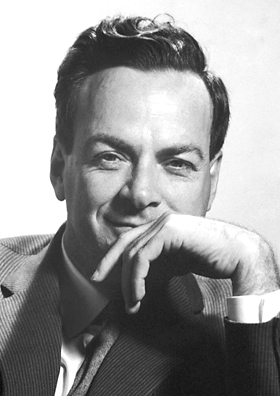
Richard Phillips Feynman was an American theoretical physicist, known for his work in the path integral formulation of quantum mechanics, the theory of quantum electrodynamics, the physics of the superfluidity of supercooled liquid helium, as well as his work in particle physics for which he proposed the parton model. For his contributions to the development of quantum electrodynamics, Feynman received the Nobel Prize in Physics in 1965 jointly with Julian Schwinger and Shin'ichirō Tomonaga.
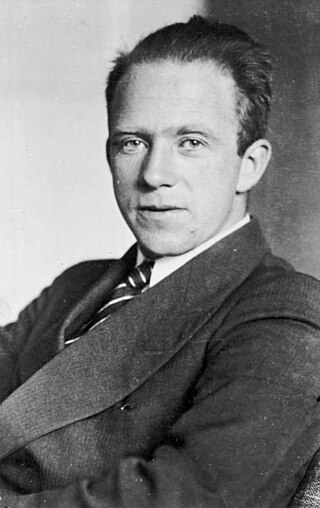
Werner Karl Heisenberg was a German theoretical physicist and one of the main pioneers of the theory of quantum mechanics. He published his work in 1925 in a major breakthrough paper. In the subsequent series of papers with Max Born and Pascual Jordan, during the same year, his matrix formulation of quantum mechanics was substantially elaborated. He is known for the uncertainty principle, which he published in 1927. Heisenberg was awarded the 1932 Nobel Prize in Physics "for the creation of quantum mechanics".
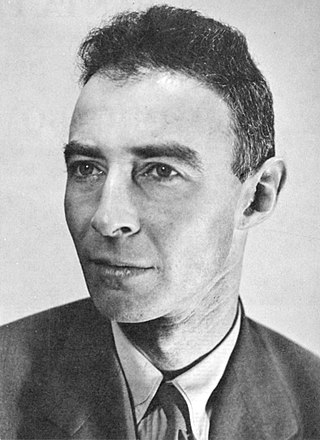
J. Robert Oppenheimer was an American theoretical physicist. Oppenheimer served as the director of the Los Alamos Laboratory during World War II, and is often credited as the "father of the atomic bomb" for his role in the Manhattan Project, the research and development undertaking that created the world's first-ever nuclear weapons.

Max Born was a German physicist and mathematician who was instrumental in the development of quantum mechanics. He also made contributions to solid-state physics and optics and supervised the work of a number of notable physicists in the 1920s and 1930s. Born won the 1954 Nobel Prize in Physics for his "fundamental research in quantum mechanics, especially in the statistical interpretation of the wave function".
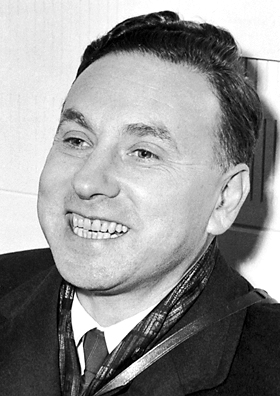
Robert Hofstadter was an American physicist. He was the joint winner of the 1961 Nobel Prize in Physics "for his pioneering studies of electron scattering in atomic nuclei and for his consequent discoveries concerning the structure of nucleons".

Igor Vasilyevich Kurchatov, was a Soviet physicist who played a central role in organizing and directing the former Soviet program of nuclear weapons.

Sir John Douglas Cockcroft was a British physicist who shared with Ernest Walton the Nobel Prize in Physics in 1951 for splitting the atomic nucleus, and was instrumental in the development of nuclear power.

Paul Peter Ewald, FRS was a German crystallographer and physicist, a pioneer of X-ray diffraction methods.

Sir Rudolf Ernst Peierls, was a German-born British physicist who played a major role in Tube Alloys, Britain's nuclear weapon programme, as well as the subsequent Manhattan Project, the combined Allied nuclear bomb programme. His obituary in Physics Today described him as "a major player in the drama of the eruption of nuclear physics into world affairs".
Stanley Greenspan was a clinical professor of Psychiatry, Behavioral Science, and Pediatrics at George Washington University Medical School and a practicing child psychiatrist. He was best known for developing the influential floortime approach for treating children with autistic spectrum disorders and developmental disabilities.

The Soviet atomic bomb project was the classified research and development program that was authorized by Joseph Stalin in the Soviet Union to develop nuclear weapons during and after World War II.
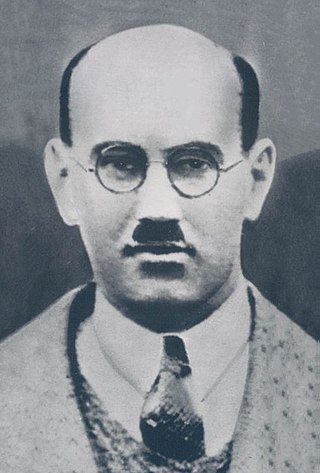
Alan Nunn May was a British physicist and a confessed and convicted Soviet spy who supplied secrets of British and American atomic research to the Soviet Union during World War II.

Walter Heinrich Heitler was a German physicist who made contributions to quantum electrodynamics and quantum field theory. He brought chemistry under quantum mechanics through his theory of valence bonding.

Atomic spies or atom spies were people in the United States, the United Kingdom, and Canada who are known to have illicitly given information about nuclear weapons production or design to the Soviet Union during World War II and the early Cold War. Exactly what was given, and whether everyone on the list gave it, are still matters of some scholarly dispute. In some cases, some of the arrested suspects or government witnesses had given strong testimonies or confessions which they recanted later or said were fabricated. Their work constitutes the most publicly well-known and well-documented case of nuclear espionage in the history of nuclear weapons. At the same time, numerous nuclear scientists wanted to share the information with the world scientific community, but this proposal was firmly quashed by the United States government. It is worth noting that many scientists who worked on the Manhattan Project were deeply conflicted about the ethical implications of their work, and some were actively opposed to the use of nuclear weapons.
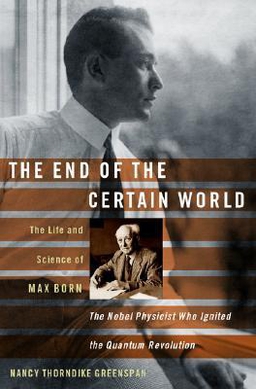
The End of the Certain World: The Life and Science of Max Born is a biography of Max Born by Nancy Thorndike Greenspan that was initially published in 2005 by Basic Books. It was the first book-length biography of Born, a Nobel laureate and one of the founders of quantum mechanics. The book was critically acclaimed and was reviewed by Publishers Weekly, David C. Cassidy, Kurt Gottfried, Graham Farmelo, and Cathryn Carson, among others.

Atomic Spy: The Dark Lives of Klaus Fuchs is a 2020 biography of Klaus Fuchs, a so-called atomic spy, by Nancy Thorndike Greenspan. The book was published by Viking Press and received several reviews. Fuchs was a physicist who is best known for passing secrets from the Manhattan Project to the Soviet Union during World War II. The book paints a sympathetic picture of Fuchs, ultimately arguing that his crime was done with good intentions, for "the betterment of mankind". Though several reviews noted their opposition to this conclusion and the sympathy the book shows to Fuchs, it has received mostly positive reviews.
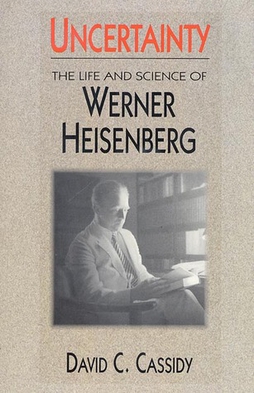
Uncertainty: the Life and Science of Werner Heisenberg is a biography by David C. Cassidy documenting the life and science of Werner Heisenberg, one of the founders of quantum mechanics. The book was published in 1992 by W. H. Freeman and Company while an updated and popularized version was published in 2009 under the title Beyond Uncertainty: Heisenberg, Quantum Physics, and The Bomb. The book is named after the quantum mechanics concept known as Heisenberg's uncertainty principle. It has been reviewed many times and was generally well received.

Beyond Uncertainty: Heisenberg, Quantum Physics, and the Bomb is a biography of Werner Heisenberg by David C. Cassidy. Published by Bellevue Literary Press in 2009, the book is a sequel to Cassidy's 1992 biography, Uncertainty: the Life and Science of Werner Heisenberg and serves as an updated and popularized version of the work. The release of new material after the 1992 publication of the first book rekindled controversy surrounding Heisenberg and his role in the German nuclear weapons program, resulting in the need for an updated version of the biography. The book's name is adapted from the first biography, whose title is taken from Heisenberg's uncertainty principle.


















